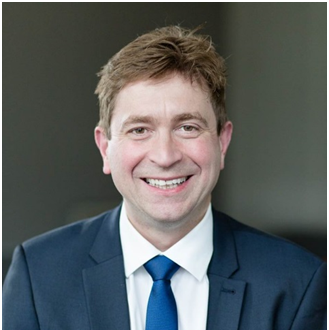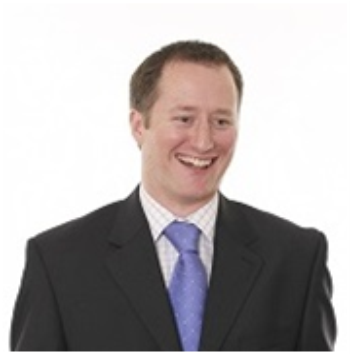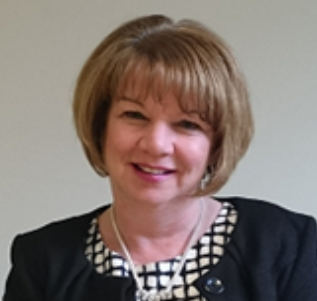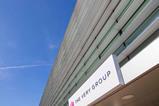
Having gone through a period of considerable change in the last five years, construction, property and services organisation, Kier Group aims to be as flexible as possible with its reward and benefits offering.
The organisation has developed from regionalised construction businesses to a national business, which has included the acquisition of a number of organisations such as May Gurney, Mouchel and McNicholas.
An agile approach to benefits
This development has extended to the business’ strategy behind its benefits package. Mark Bradshaw, group reward and benefits director, says: “It’s become more important for us to make sure that we’ve got a corporate brand, a corporate standard, that we can roll out across our enlarged business of 21,000 employees, but still retain flexibility, because we do operate in quite different markets. Our main philosophy has been to keep benefits as flexible and as nimble as possible.”
An example of this is the flexible benefits programme that it rolled out to all employees in April 2017. Prior to this, Kier Group was on the verge of launching a flexible benefits plan, however, Mouchel, an organisation acquired in 2015, already had one in place, so Kier Group rolled out this plan to all employees. The growth of the business means Keir Group has a large number of employees that join under Transfer of Undertakings (Protection of Employment (Tupe)) regulations, but its flexible benefits plan means the organisation can easily enrol new employees to the scheme.
Kier has also made changes to the way it recognises and awards employees. In 2016, it introduced an annual awards programme in 2016, which has since seen hundreds of entries. Gary Thomas, head of reward, says: “We’ve also done a lot of work to have quarterly and monthly recognition within the businesses as well, giving everyone access to thank-you cards they can use to say 'well done' to someone in the moment. Peers can nominate each other for all the different types of awards that we run and we encourage it throughout the business. We have a lot of people who are office-based, but also a lot who are out on site so we’ve given them tools to do paper entries to make sure they can be part of it.”
The organisation introduced its quarterly recognition scheme a few years ago and will introduce a monthly recognition option in April.
Pension scheme consolidation
Another key change that Kier Group has made in the past few years has been to consolidate its defined contribution (DC) pension arrangements. It had around seven open schemes but has closed these all and replaced them with a master trust, provided by Blackrock. This has better annual management charges for employees, for example, set at 0.31% for those in the default fund. Alison Mungo, pensions manager at Kier, says: “We had a number of different schemes with different charges, so we decided to implement one pension scheme that represented good value for money for members, as well as flexibility for them to be able to access their pension online. From July 2016, we introduced the new scheme to new starters so we could see how the administrative process was working, then rolled it out to existing staff from September 2016. “
Kier consulted with around 18,000 employees on the pension changes and now has 14,000 members in the master trust.
The organisation has also placed a great deal of focus on financial education and wellbeing in the past year. Low budgets in the reward team mean it has worked innovatively to leverage the support it gets from its existing suppliers. These include YBS Share Plans, which administers Kier Group’s sharesave and share incentive plan (Sip), which are available to all employees, and Secondsight, which has been working with the employer on addressing the financial education needs of employees and engage them with their share schemes.
Jonathan Sturman, governance manager, public sector pensions and share schemes at Kier, says: “When we launched our sharesave [scheme] in the autumn of last year, we launched it in conjunction with Secondsight's education piece. Employees can click through the Kier website to the Secondsight website, which has various videos and modellers on how sharesave works. One of the things we find is that it’s often difficult to explain to employees when it's not face-to-face how these schemes work, so that got really good engagement with people visiting the site.”
The organisation is due to relaunch its Sip in a few month’s time, when it will carry out similar financial education for employees using videos and modelling tools.
“On the pension side, we have a programme of events [provided by] Blackrock,” says Sturman. “We’ll bring out the Blackrock pension reps to various employee roadshows, and they’ll give a presentation on pensions. That can be skewed to general pensions or for those heading towards retirement age.”
Kier Group also runs webinars for any employees that cannot get to the site of the roadshows.
Benefits communication
Kier has spent time reviewing how benefits are presented to employees and ensures it is consistent in its communications in terms of the language used, presentations to employees and its benefits website and emails. “People understand when they’re getting something hitting their email inbox or, on some occasions, their letterbox, they know i'ts coming from Kier pension and benefits,” says Bradshaw.
Bradshaw and the team recognise the importance of face-to-face communications in engaging employees with their benefits package. “As a team we regularly visit offices, sites and depots," Bradshaw explains. "We can put as much as we like online, we can send as much as we like out to home addresses but there’s nothing like us actually standing there talking to people about the benefits they’ve got and spending time with them one-on-one. It makes such a massive difference. I’m always surprised, when I go to these [presentations], how some people are still not fully aware of some benefits we’ve had for such long time. We always see engagement pick up after one of those sessions. For us, it’s about getting out there and making sure we get the message to people.”
The organisation also canvasses employee feedback to find out if they think they are being fairly rewarded and recognised through annual and pulse surveys, which have yielded a positive trend.
Reward and business objectives
The reward team works closely alongside the operational part of the business, for example, in attending operational business meetings to follow any changes in which reward might play a role. One example is the attraction and retention of key talent in the business, says Bradshaw. "In construction and property management at the moment there are some scarce skills around things like quantity surveyors for example,” he explains. “Is our package competitive? We consistently benchmark and work with the business to see whether we need to adjust the level of benefits [offered], and within the flexible benefits platform we can do that to a greater or lesser extent. We’re doing a lot of work at the minute to attract new talent into the sector.”
The attraction of younger talent into the organisation is a key focus for Kier, so the reward team is always reviewing its benefits package to ensure that it is providing the right types of benefits. “We’re constantly looking at whether we can help them with their financial wellness,” says Bradshaw. “Also, the ageing workforce at the other end. One of the things we put into our flexible benefits programme was eldercare so that we could partner with an organisation to help provide emergency support for those people that are perhaps looking after elderly relatives. It’s about trying to be innovative in our thinking.”
At a glance
Kier Group is a property, residential, construction and services group which operates across a range of sectors. Its head office is at Tempsford Hall in Bedfordshire, and it has over 85 office across the UK. Kier Group has around 21,000 employees, with an average age of 44. There is a 76% male, 24% female split and the average length of service is 7.5 years.
Business objectives impacting benefits
The organisation's vision is to:
- Operate a safe and sustainable business.
- Accelerate growth to be a top three player in chosen markets.
- Achieve top-quartile performance and efficiency.
- Provide sector-leading customer experience for clients and their customers.
- Attract and retain highly motivated, high-performing teams.
- Embrace innovation and technology across the business.

Career history
Mark Bradshaw is group reward and benefits director. He joined Kier Group in July 2013 having previously held similar roles at Tata Steel, National Grid, Amey and Siemens.
Something Bradshaw and the reward team believe is very valuable, but also the most challenging issue is getting benefits communication right for Kier’s workforce. “We do have a very diverse workforce and getting one communication that fits all is sometimes quite difficult, so we’re constantly looking at ways of how we communicate,” he says. “People take in information in different ways, so generally if we’ve got a big message to get out there we use all channels whether it's digital, face to face, or letters through the post. That can be quite challenging for us, trying to make sure we get the messaging at the right level.”

Gary Thomas, is head of reward, joined Kier in September 2014. HE previously held roles at Emap, Aon Consulting and Boots.

Jonathan Sturman is governance manager, public sector pensions and share schemes. He joined May Gurney in 2004 which was acquired by Kier in 2013. He was previously deputy company secretary at May Gurney.

Alison Mungo, pensions manager, joined Kier in June 2015 following the acquisition of the Mouchel Group. She was with Mouchel Group for 27 years as a pensions advisor and, from 2013, pensions manager.
Benefits available
Pensions and financial benefits
- A defined contribution (DC) master trust, open to all employees, with matching contributions up to 7.5%.
- Sharesave and share incentive plan (Sip) open to all employees.
- Financial education.
Healthcare and wellbeing
- Private healthcare trust dependent on grade.
- Eyecare: employees can claim back the cost of an eye exam up to £20 and up to £50 for glasses if needed for display screen equipment (DSE).
- Critical illness insurance available through flexible benefits plan.
- Employee assistance programme (EAP).
- Discounted gym membership.
Company car
- Company car or car allowance, dependent on grade and business mileage.
Work-life balance
- Family-friendly policy: paternity, maternity and shared parental leave.
- Flexible-working policy.
- Eldercare available through flexible benefits plan.
- 26 days holiday as standard.
Other benefits
- Discount vouchers and cashback offers.
- Annual bonus, dependent on grade.
- Monthly and quarterly employee recognition scheme, and annual employee awards.
- Travel insurance available through flexible benefits plan.
















